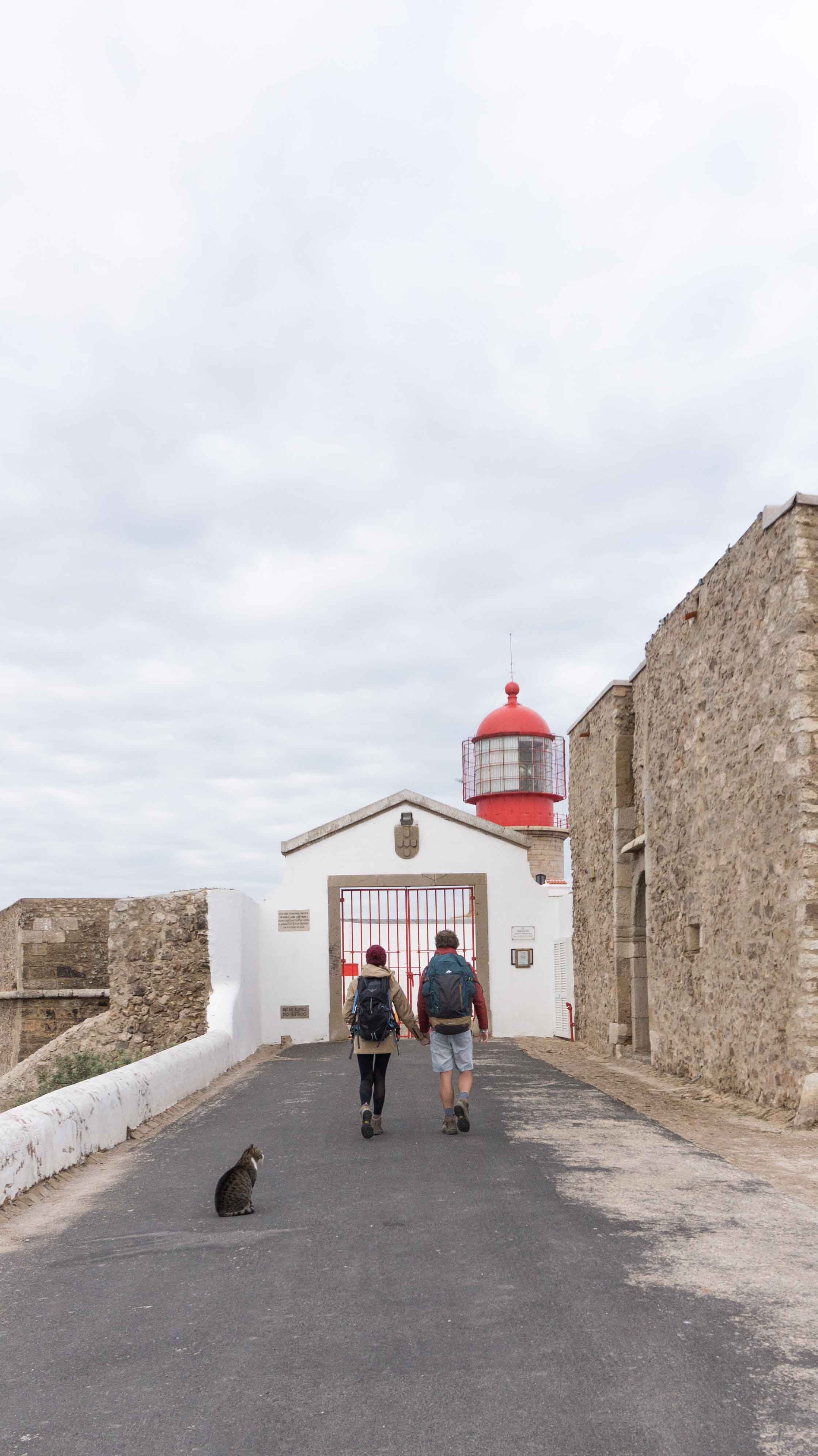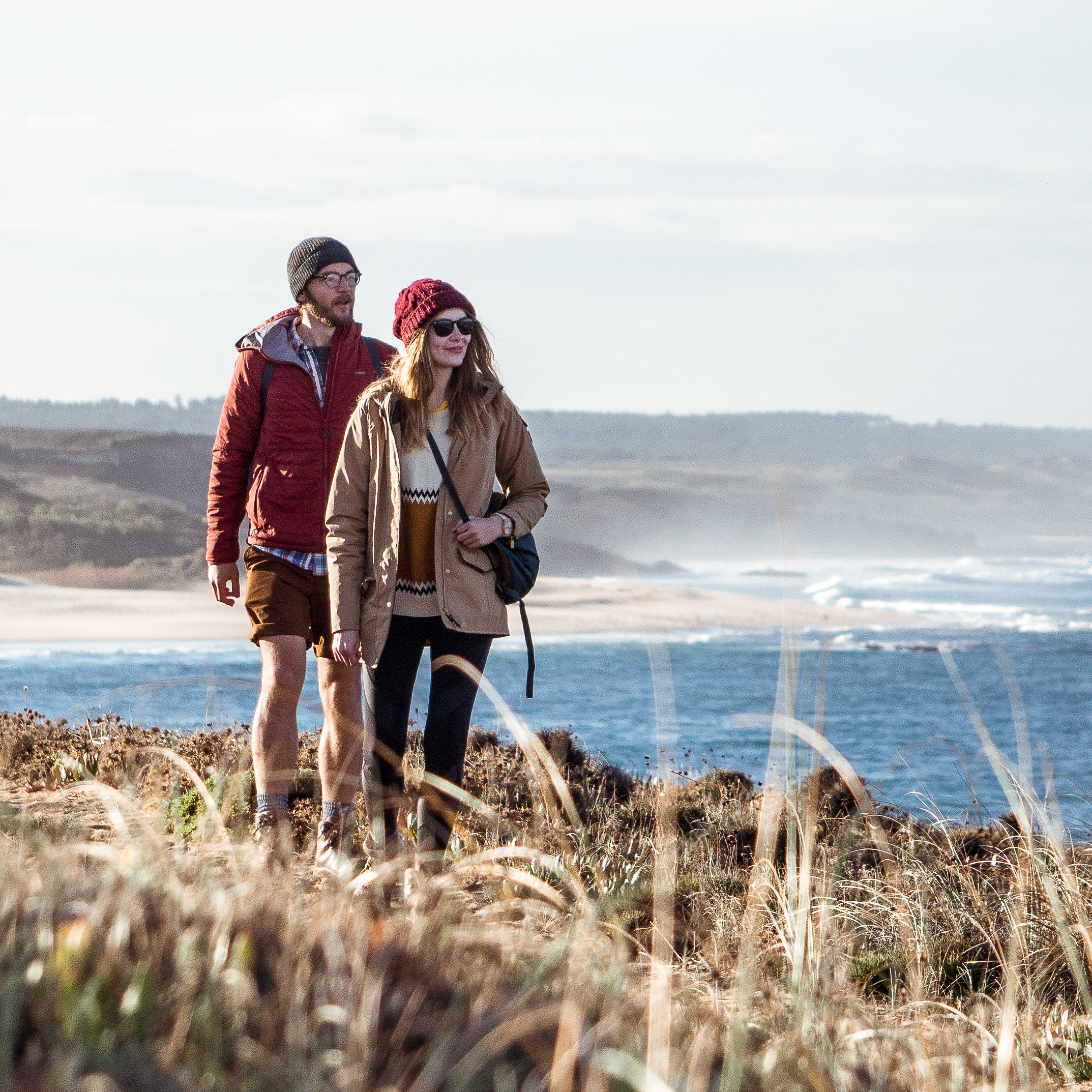Distance: 96km
Time: 6 days
Our map of this section is here
This is our third and final journey entry on the 250km Rota Vicentina in Portugal. You can read the first here and the second here. Our Guide is coming soon (promise).
Any ending of a journey deserves its own moment we think. It’s a bittersweet one as we’ve loved -like seriously, loved- walking the Rota Vicentina, an unendingly beautiful route down the Portuguese coast. Finishing is both the best and the worst part.
The final stretch took us back on the ‘Historical Way’ section of the Rota Vicentina and inland through Portuguese village after Portuguese village. They’re interesting: old town places in the centre with newer cottages built around it – always white, white, white.
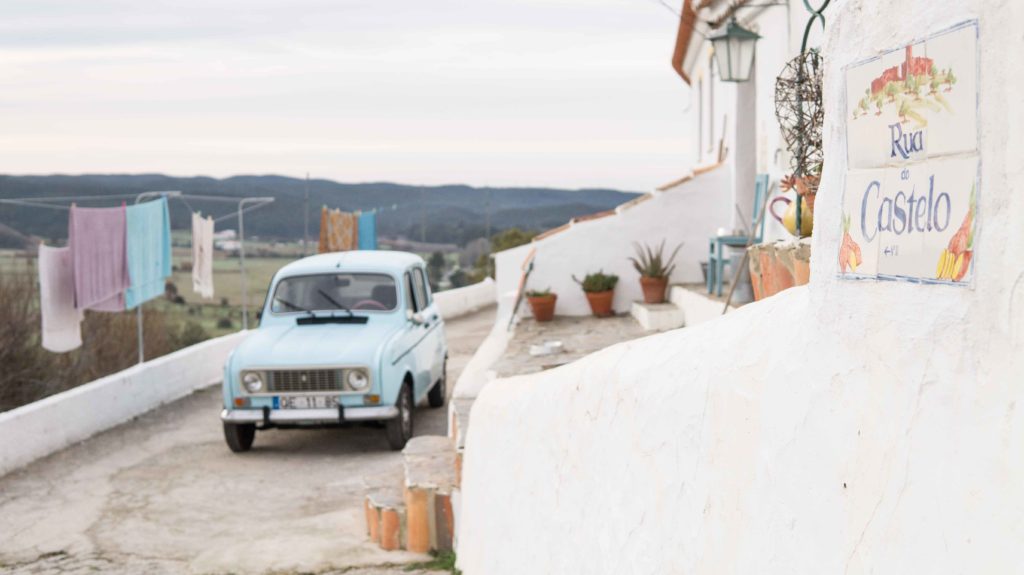
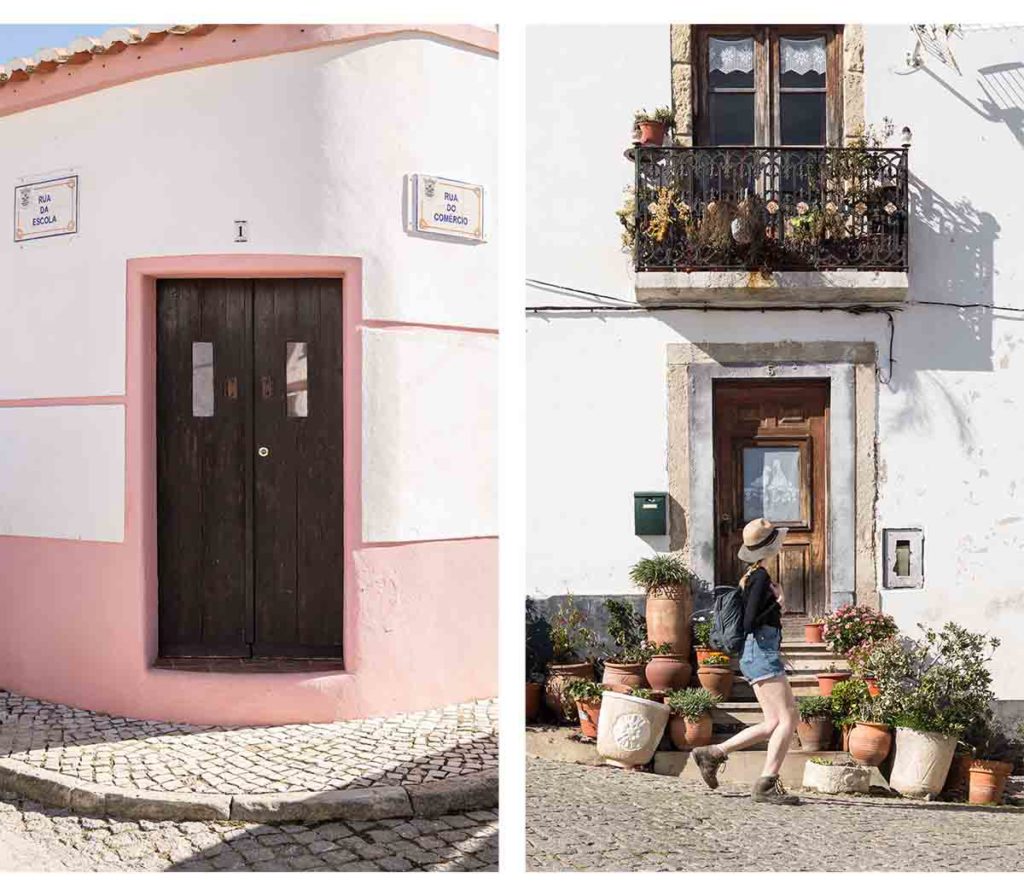 Men sit in bars drinking espresso. Cats lounge around on the road. Once agricultural communities, lots of these places have only recently been revived again, this time into attracting tourists.
Men sit in bars drinking espresso. Cats lounge around on the road. Once agricultural communities, lots of these places have only recently been revived again, this time into attracting tourists.
It worked for us, because I think we must’ve stopped in almost every single one, perfect for cheap coffees and lunches. The villages barely open a sleepy eyelid at us as we walked through.
Our first real stop though was a surfing beach, Arrifana. This huge cove has fostered a little community of surfers, and in turn a load of laid back hostels. Even in February the surfers were there when we arrived, floating in the water just as the last sunlight faded away.
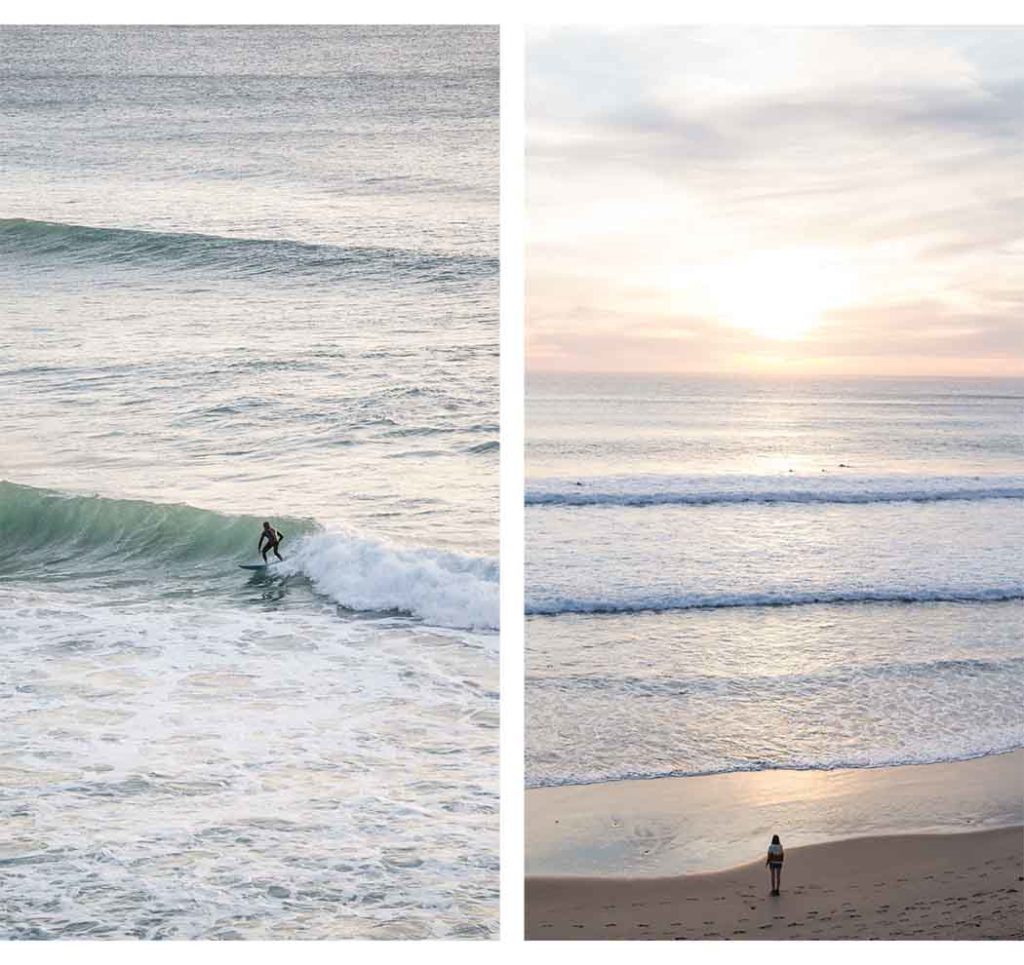 Of course, we don’t surf – walking everywhere is more than enough. We sat on the balcony of the hostel eating cake instead, watching the witchcraft and wizardry that is surfing.
Of course, we don’t surf – walking everywhere is more than enough. We sat on the balcony of the hostel eating cake instead, watching the witchcraft and wizardry that is surfing.
We only stayed there a night to continue walking early the next day. The coast beyond Arrifana too is truly amazing, with the Historical Way taking us right up and over the cliffedge to see far and beyond. There’s something about the sea spray too in all these views: it gives everything such a mystical look, in photos and real life.
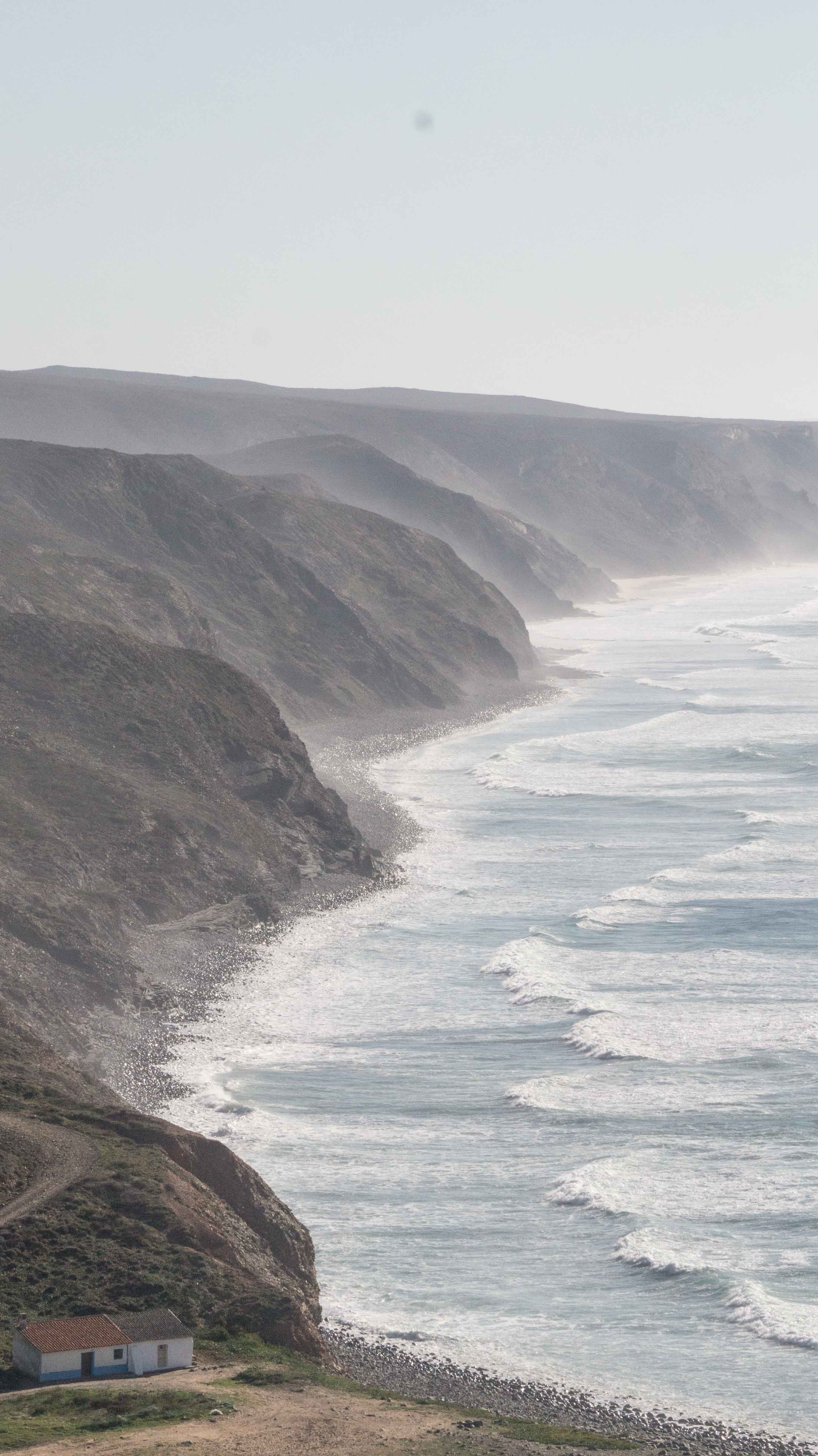
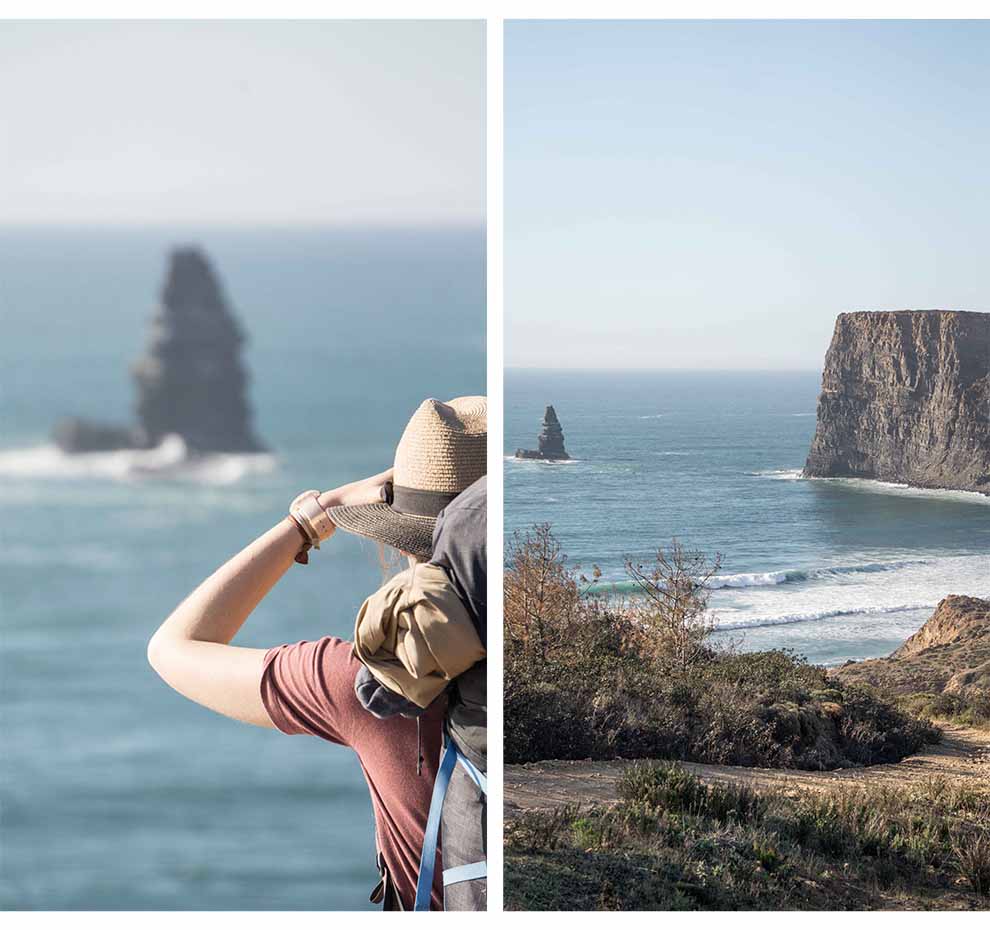 We met the odd person on a bike, the odd surfer in an old banger. It didn’t seem to us a particularly good idea to do either of these things: they all bumped and jiggled along kinda hopelessly over the rough tracks. Perfect routes for walking though, most of the time we continued making our slow way without anybody.
We met the odd person on a bike, the odd surfer in an old banger. It didn’t seem to us a particularly good idea to do either of these things: they all bumped and jiggled along kinda hopelessly over the rough tracks. Perfect routes for walking though, most of the time we continued making our slow way without anybody.
We struck the next afternoon one of our favourite landscapes of the entire Rota Vicentina. The route rounds a bend and this enormous expanse suddenly appeared before us: the sand dunes of Bordeira. At first we thought it was just a beach but no, they’re actually giant dunes you can walk up, down and around. There’s even a beach bar, looking like it’s in the terminal stages of being reclaimed by the beach.
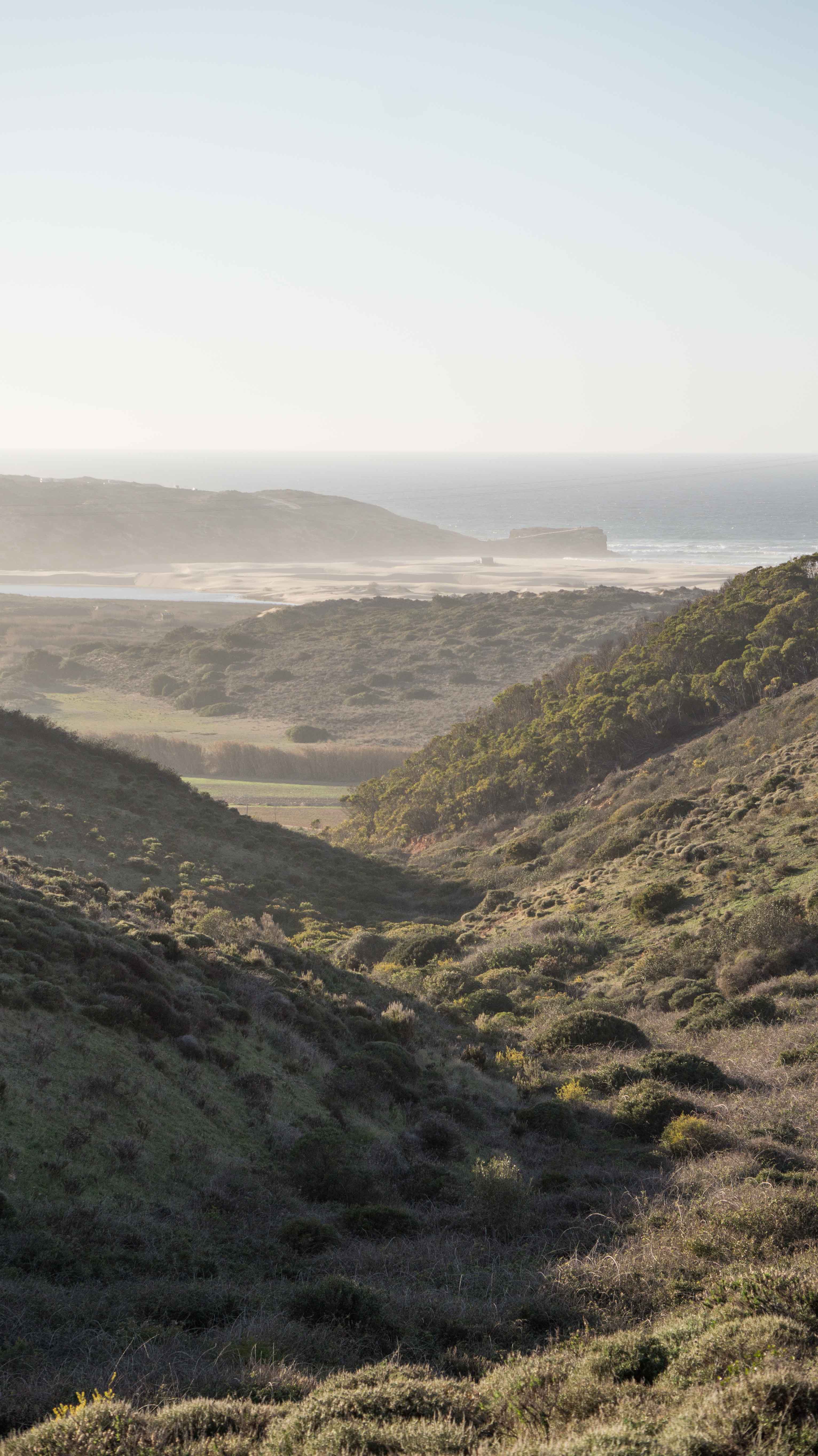
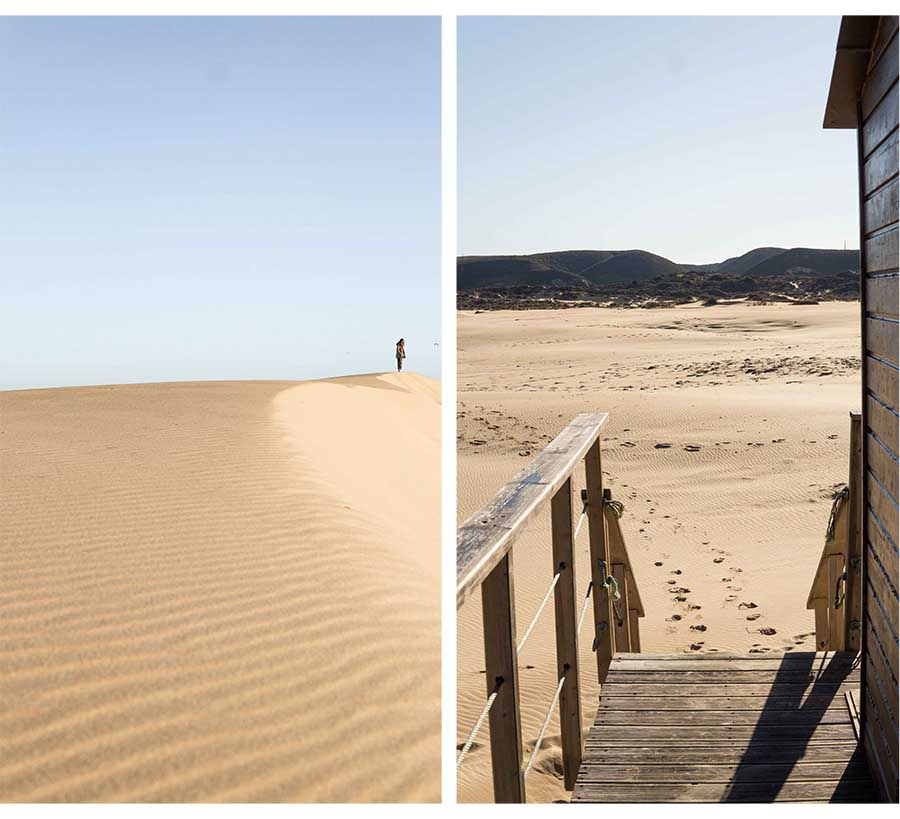
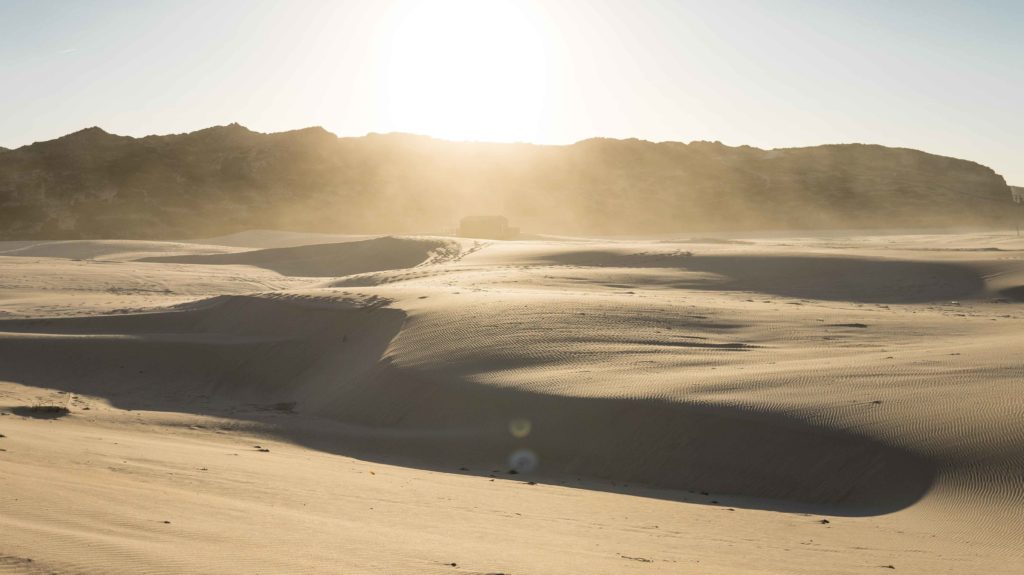
Needless to say we were alone, and seeing it was genuinely one of our highlights of Portugal.
After Bordeira the Historical Way swung away from the sea again, back to where the landscape is dry, studded with olive trees and cattle farms. We can attest to the steepish hills all around the route too, as we spent days meandering up and down them, under a deep blue summery sky.
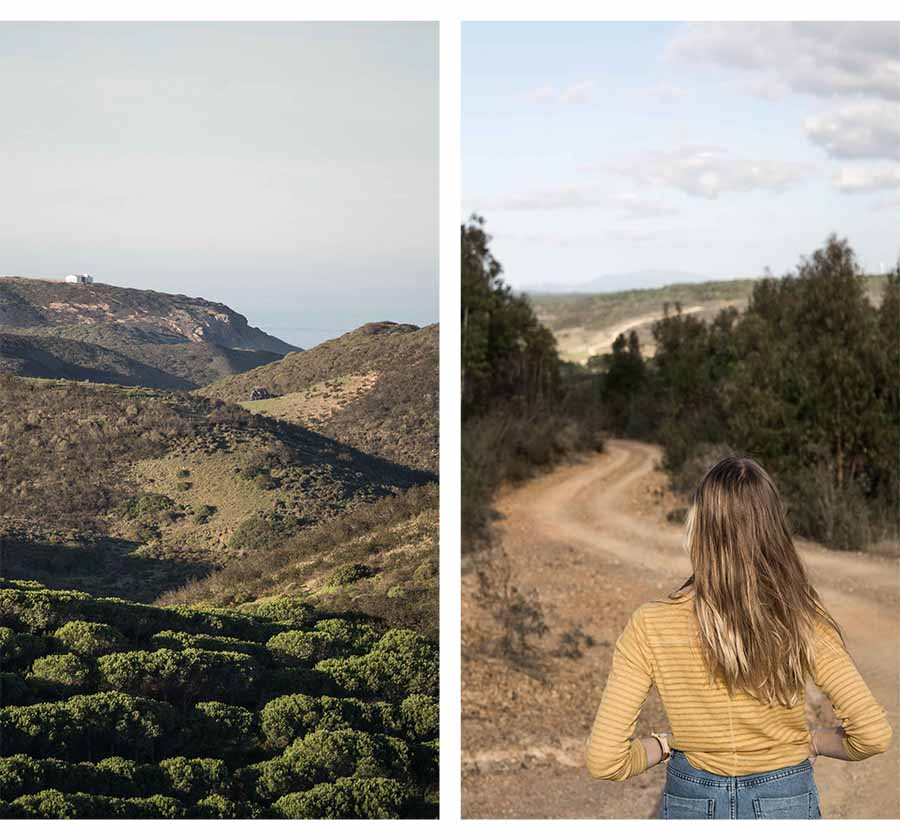 A little conurbation stuck out in all this. Mostly by its pristineness, and how it sprung up out of nowhere. Pedralva was another one of these farming villages but had been left derelict in the later part of the twentieth century. And we mean derelict: think ruins and rubble.
A little conurbation stuck out in all this. Mostly by its pristineness, and how it sprung up out of nowhere. Pedralva was another one of these farming villages but had been left derelict in the later part of the twentieth century. And we mean derelict: think ruins and rubble.
Then only about ten years ago, the whole of Pedralva was redeveloped, each tiny house made over into perfect little holiday homes. The walls were rebuilt and painted fresh white, the doors in blues, reds and yellows. A restaurant and café was erected.
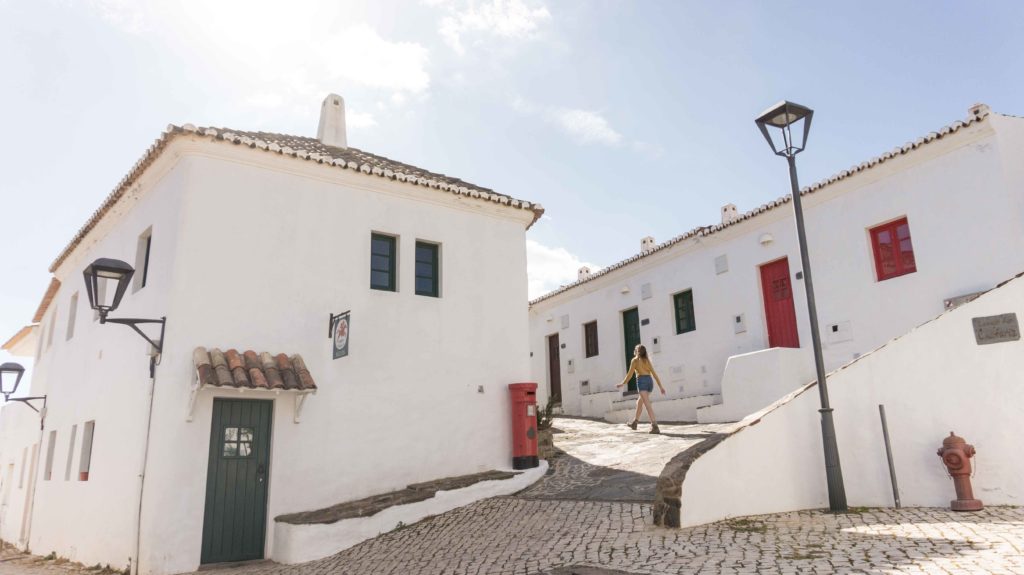
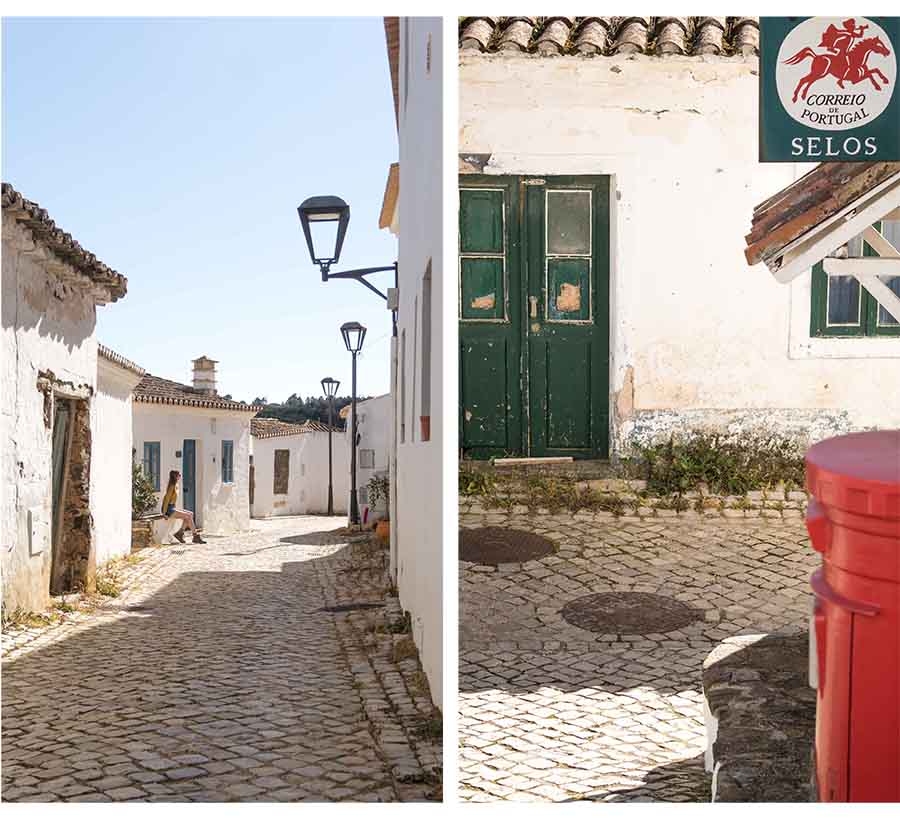 It’s such a pretty place. Friendly too, even arriving in the off season like we did. We stayed for a few hours, and other travellers seem to drift in too: three American cyclists, a British caravanning couple. We like that quirkiness about the off season.
It’s such a pretty place. Friendly too, even arriving in the off season like we did. We stayed for a few hours, and other travellers seem to drift in too: three American cyclists, a British caravanning couple. We like that quirkiness about the off season.
And then just like that, it was the last day walking. It felt quite quick but we’re wrong: we’d in fact been going snail slowly. It was another perfect blue day and we were dipping in and out of coves as a sort of last hurrah to the coast. And it was idyllic: we walked past people doing yoga on the cliff edge, other people walking, jumpers tied around their waists, clutching cameras. Everyone seemed happy, carefree along this stretch.
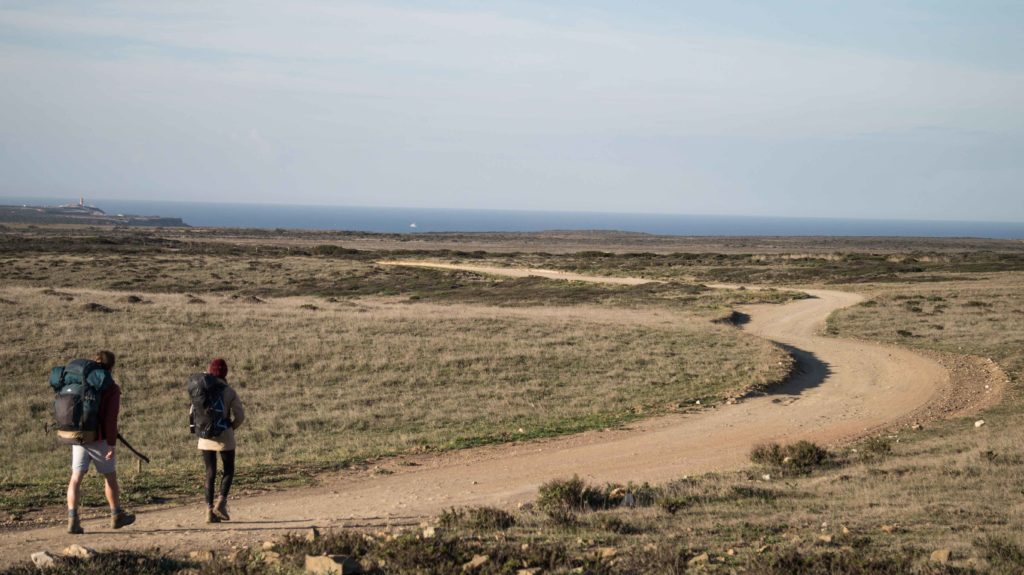
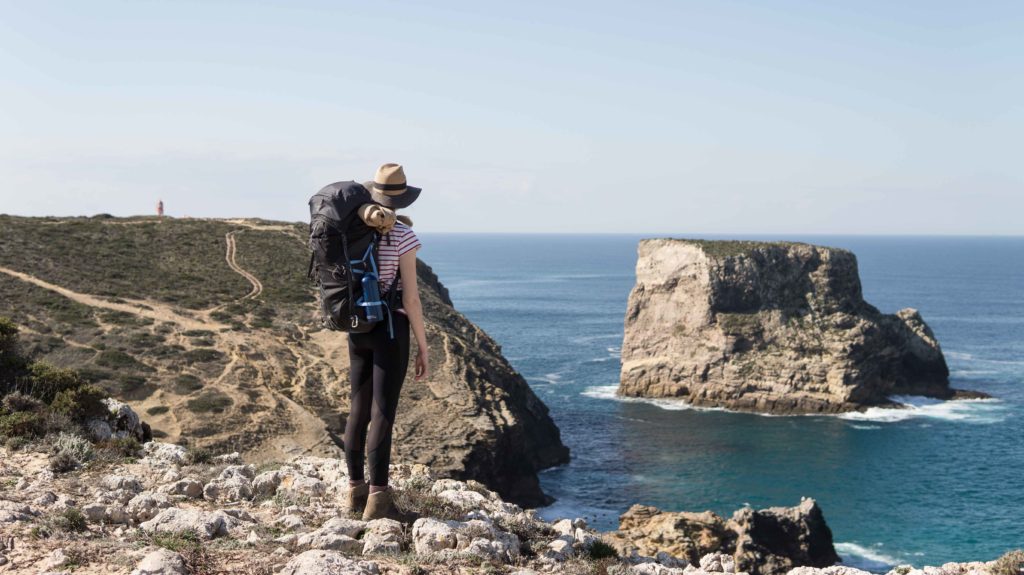 Ok maybe I’m just imagining that bit. but with walking you tend to pick up vibes, good and bad, and this was most definitely good. It was also kinda nice to see people.
Ok maybe I’m just imagining that bit. but with walking you tend to pick up vibes, good and bad, and this was most definitely good. It was also kinda nice to see people.
We saw the Cape of St Vincent lighthouse ahead the whole time. It looked so near, but it took us all morning to finally round the edge. We walked over huge rocky outcrops, passing little mounds of stones other people mysteriously leave on walking trails everywhere.
Here everything was quiet, nobody was there – pretty much like all of the Historical Way, the Fishermen’s Way and the Rota Vicentina.
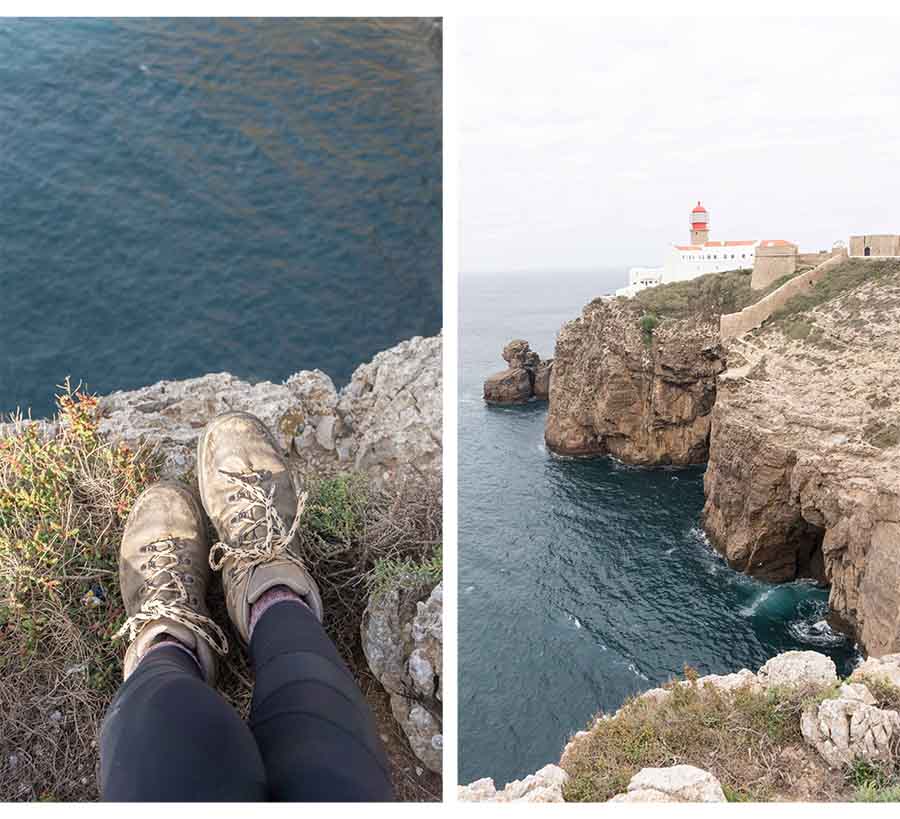 That is until we were standing in full view of the lighthouse, our big finish, and we realised perhaps hundreds of people were concentrated around it.
That is until we were standing in full view of the lighthouse, our big finish, and we realised perhaps hundreds of people were concentrated around it.
Yeah, the end of the Historical Way and the Rota Vicentina is a tourist hotspot. The lighthouse of Cabo de San Vicentine (the Cape of St Vincent) is the most south-westerly point of mainland Europe, and one pretty spot to boot. The lighthouse has stood on the Cape for the last couple of hundred years- and still operates today. It has old style romanticism, a candy cane red and white stuck on the edge of sheer cliff.
People of course were coming out to see it in the busloads. Some looked at the map showing the Rota Vicentina route from Santiago where we’d started.
Heaving places are not really for us. So we came back the next morning after staying in nearish Sagres (pronounced: Sarkersh).
It was a white sky morning, completely different to the day before. Nobody was around except a large cat who appeared hopefully when we arrived. We walked around the lighthouse, looking at it perched right on the edge, nothing but blue beyond. It felt almost stormy, and we fancied this new weather heralded the end of walking, and the end of our time exploring Portugal too. Sad!
Endings are so funny on walks. They’re your destination but not why you did it at all.
